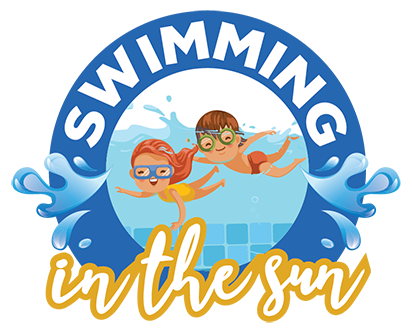Which Swimming Goggles To Get For Kids
First, goggles are not REQUIRED for swimming lessons. The only thing required is that students open their eyes underwater when swimming. If they do not do that they must wear goggles. For the littlest students where they haven’t learned how to put their face in yet and these are their first lessons we probably won’t use goggles for the first class or so until they are a little more comfortable in the water.
When it comes to goggles it’s all about personal preference. What works great for one child can annoy another. I’ve found that kids who hate wearing goggles just haven’t found a pair that feel comfortable on them.
The pair that works the best for 95% of my students are Eversport.
They have large lenses.
Large lenses reduces the pressure around the eyes so they feel better.
It makes it easier for children to see better, which makes them feel more comfortable putting their faces underwater
An easy-to-close clip to secure the lenses is a lot easier and more comfortable to put on your child’s head.
You get two pairs for approximately $13 on Amazon. They come with a one-year warranty. They offer several combinations of colors. They have a quick release button on the strap which is extremely helpful for kids who are really sensitive to their hair being pulled. They are easy to adjust the fit. Kids tend not to complain about these goggles hurting. It’s rare for me to have a student for which these goggles do not work for their face shape.
Do NOT get the pairs with opaque or reflective lenses for class. It is imperative that I can see my students eyes. Clear or slightly tinted lenses are preferred.
Just DON’T waste your money on cheap goggles. They leak and are worthless. If you spent a dollar on goggles you wasted a dollar.
For swimming lessons I recommend:
Clear lenses. Dark and reflective lenses are really cool and fine for the older, more experienced students, but they are not good for little ones learning how to put their face in. I need to be able to see their eyes to know if they are opening their eyes underwater. The dark lenses make underwater darker, which means it’s scarier for kids. I find that new swimmers are much happier learning to go under using goggles with clear lenses.
No branded plastic attachments sticking out from the lenses. They cause goggles to leak in class and waste a lot of class time. Save them for play time.
NO MASKS! Goggles only cover the eyes. Masks cover the nose. Masks are for snorkeling only! Students should NOT wear masks outside of class either unless they are snorkeling.
Double-Straps are usually ideal depending on the design. Single straps are ok, but on kids they tend to slip down to their necks because they have such fine, slippery hair. They work for girls who can wear a low ponytail and the strap rests on the goggles.
Do NOT get Babiators! I have not seen them work on a single student. They leak and are uncomfortable.
Additional goggle advice:
Goggles don’t last forever! If they are used a lot they usually only last one season. Get fresh new goggles each year. They will develop leaks. The lenses get scratched and makes it hard for your child to see through.
Get a hard case for the goggles. Well worth the small investment and the case will last many summers and pairs of goggles. Here’s what I use Flow Swim Goggle Case - Protective Case for Swimming Goggles with Bag Clip for Backpack.
Get ANTI-FOG SPRAY! I spend way too much time getting fog out of students goggles. Even goggles that advertise “anti-fog” lenses will fog up after a few uses. They just apply some anti-fog coating to the lenses which wash away after a few uses. A $10 bottle on Amazon will last years.
Rinse goggles in fresh water after using and don’t leave them in the burning sun when not in use. These steps will extend the life of your goggles.
Most kids need kid goggles, but I’ve seen kids as young as 7-years-old need adult goggles. Please check to make sure the goggles fit before swimming lessons. They should be snug, but not so tight it hurts after a few minutes. Check around the edges of the goggles to look for obvious leaks. Adjust and ask your child how they feel.
